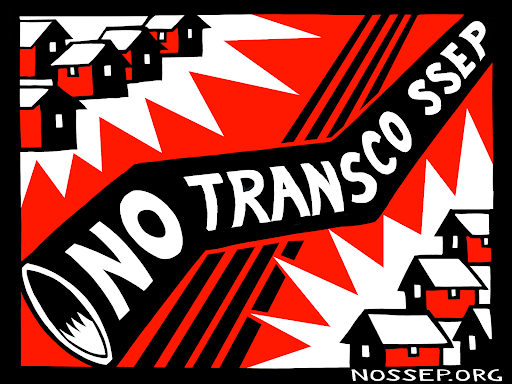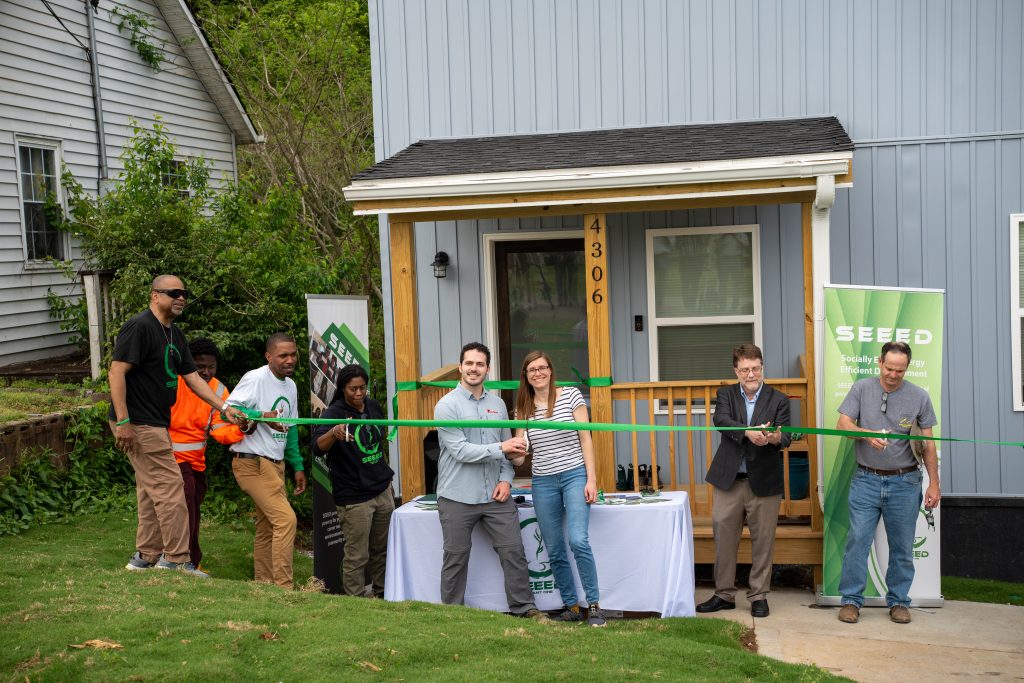Last Chance Landscape
When something as lovely as the Blue Ridge Parkway passes through one’s own backyard, it’s easy to take it for granted—the peaceful, curling road, the superb mountain vistas, and the economic rewards of Parkway related tourism. But residents of the Roanoke Valley of Virginia may soon be paying the price for ignoring the loveliness in the mountain peaks to the east of them. The 28-mile section of the Blue Ridge Parkway that skirts around Roanoke from milepost 108 to 136 was designated as one of Scenic America’s Last Chance Landscapes for 2002-03.
Scenic America, a nonprofit organization based in Washington, D.C. dedicated to preserving and protecting the scenic heritage of United States, named 10 such endangered landscapes last year, and the designation is not one of which to be proud.
The Roanoke section of the Parkway was completed in the 1960s, and at that time the views along this corridor were of pastoral hillsides and gently sloping wooded mountains. Today those views are changing. Over the last decade, Roanoke has become increasingly susceptible to suburban sprawl, as residential and commercial development clog the valley and climb up the mountainsides.
Scenic America president Meg Maguire says, “I know this stretch of the Parkway well. Here’s one of the premier roads in the country, known for its staggering beauty, and it’s under threat.”
The Scenic America designation is designed, says Maguire, to draw attention to endangered landscapes like this one and to rally support for preservation. “There’s uncontrolled development in Roanoke right now,” she explains, “with no mitigation of impact.”
Gary Johnson, chief landscape architect and planner for the Blue Ridge Parkway, who in partnership with Roanoke County nominated this section of the byway for Last Chance Landscape designation, says the nomination was in many ways a last ditch effort to save an embattled viewshed. Johnson, who has worked with the Parkway for nine years, says in that time he has seen the landscape surrounding the drive change dramatically. “A lot of our landscape issues occur from Roanoke down to the state line,” he explainss. This is in large part because the southern section of the Parkway in Virginia, instead of climbing the mountain ridges, passes through rolling mountain farmland ripe for development.”
Roanoke County administrator Elmer Hodge says the Parkway, as it runs along Roanoke, is threatened by just about every kind of development imaginable but mostly residential and commercial. He says some area residents still feel hostility toward the National Park Service here as well. “There is still lingering resentment about how the Parkway split farms when it was built,” he explains.
But, at the same time, there are Roanoke residents who are concerned about how the destruction of Parkway viewsheds will impact the countryside in which they live and dollars from tourism. “I know private citizens who live in Roanoke County,” says Johnson, “who are concerned about the scenic value of the Parkway and what it brings to the Roanoke area.”
Maguire says the value of tourism is easily overlooked by landowners and developers who may feel protecting the Parkway viewsheds is about satisfying a handful of conservationists. “Tourism brings a huge amount of money into Virginia each year,” she points out. The Parkway alone generates about $2.2 billion annually in tourism related dollars, and almost half of the Parkway is located in Virginia.
Maguire believes there is hope to preserve not only the natural beauty of this section of the Parkway but also the economic benefits it brings to the Roanoke Valley. “We’re about supporting people who are out their trying to save these places,” she says.
The Parkway and Roanoke County have been trying to figure out ways to protect this section one of America’s most scenic drives for nearly a decade with some help from Carlton Abbott, the son of the Parkway’s original landscape architect, Stanley Abbott. By seeking Last Chance Landscape designation, they were trying to draw more public attention to the problem, and, hopefully, more funding to help preservation.
Chief planner for Roanoke County Janet Scheid says that when the county first started looking at viewshed protection ten years ago, “We had no legislation or zoning on the books to protect viewsheds.” Six months ago, however, the Roanoke County Board of Supervisors asked county staff to put together a plan for viewshed protection that could be built into the county’s comprehensive plan and zoning regulations.
“But even changing zoning regulations will not protect the Parkway,” notes Scheid. “As long as people can build along the Parkway, they’re going to. There’s that old balance between property rights and preservation.”
Scheid says she and Johnson spent 30 days on the Parkway identifying viewsheds and then doing computer modeling of those viewsheds. She said they have made a map of where those viewsheds are and are looking at ways they can protect scenic Parkway vistas and provide screening in areas that are already developed.
One way the county and the Parkway hope to protect viewsheds is through conservation easements that would protect open spaces from development and would allow other spaces to grow up naturally to provide screening through trees and brush. Johnson says the Parkway is working in conjunction with the Western Virginia Land Trust to encourage private property owners to put conservation easements on their land to restrict future development. Johnson is quick to emphasize, however, that no property owners along the Parkway or within the Parkway viewshed will be required to place conservation easements on their land; it will be strictly voluntary.
The Parkway and/or the county may also purchase property along the drive that is currently in private hands if the owners agree to sell. Scheid says she has no idea at this point how much it will cost to purchase property and easements.
Related Articles
Latest News
More Stories

Leave a comment
Your email address will not be published. Required fields are marked *




